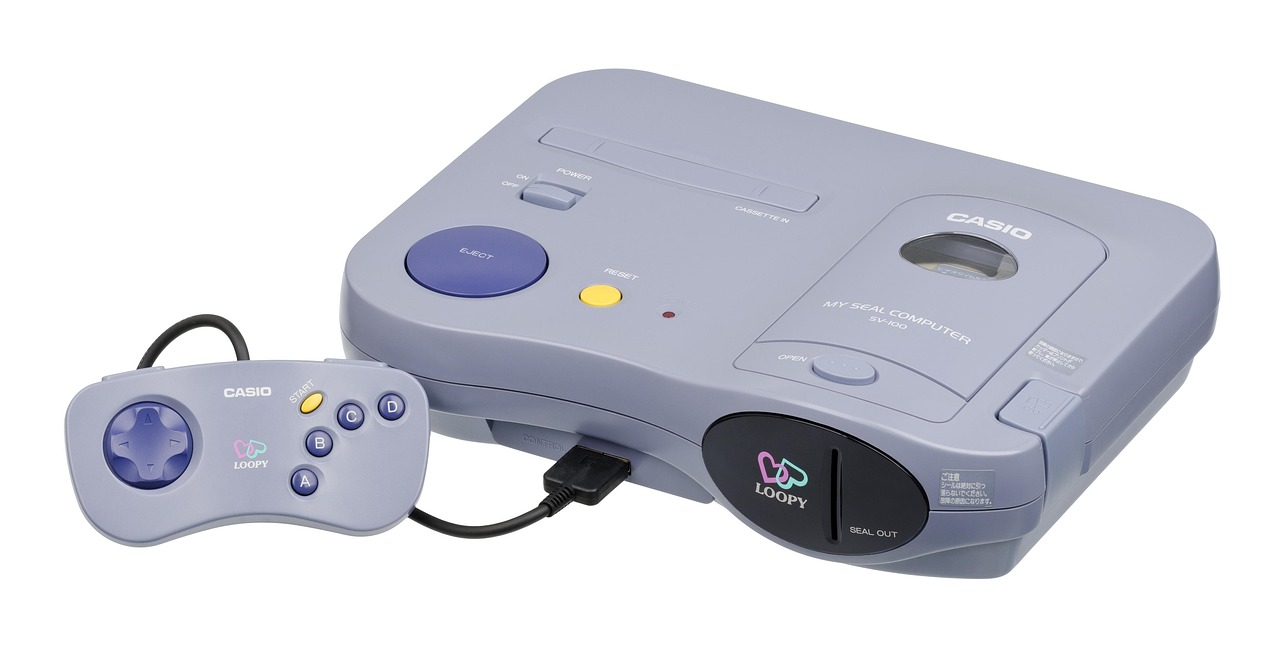Crafting the perfect game trailer is an art form. More than just a promotional video, it’s a carefully constructed narrative that aims to capture the essence of a game, tantalize potential players, and ultimately, drive sales. In today’s saturated gaming market, a compelling trailer can make or break a game’s success. This post dives deep into the world of game trailers, exploring their various aspects, techniques, and how to create one that truly resonates with your target audience.
The Power of a Game Trailer: First Impressions Matter
Why Game Trailers Are Crucial
In the crowded landscape of video games, standing out is paramount. A well-executed game trailer serves as the initial, and often crucial, introduction to your game for potential players. Consider it your game’s elevator pitch, but in visual form.
- Grabs Attention: A captivating trailer can cut through the noise and grab the attention of gamers scrolling through social media, browsing online stores, or watching showcases.
- Showcases Gameplay: Trailers provide a sneak peek into the core mechanics, art style, and overall feel of the game, allowing players to assess whether it aligns with their preferences.
- Builds Hype and Anticipation: By revealing key features, story elements, and exciting moments, trailers fuel anticipation and generate buzz around the game’s release.
- Drives Sales: Ultimately, a successful trailer translates into increased pre-orders, wishlists, and post-launch sales. Many gamers decide whether or not to purchase a game solely based on the trailer.
For example, think of the initial trailer for “Cyberpunk 2077.” It sparked massive interest, despite the controversies that followed the game’s launch. The stunning visuals and glimpse into the futuristic world were incredibly effective.
Statistics: Trailers and Game Sales
The impact of game trailers is backed by data. Studies consistently show a strong correlation between engaging trailers and increased game sales. While exact figures vary depending on the game and platform, several key findings stand out:
- Games with highly viewed trailers often see a significant boost in wishlist additions on platforms like Steam.
- Trailers showcased during major gaming events like E3 or Gamescom can generate millions of views and contribute to a substantial increase in pre-orders.
- A positive sentiment analysis of trailer comments and reviews often indicates a higher likelihood of purchase among viewers. Tracking sentiment is critical.
Structuring Your Game Trailer: Building a Narrative
The 3-Act Structure
Like any good story, a compelling game trailer often follows a three-act structure:
- Act 1: The Hook (0-15 seconds): Introduce the world, characters, and core conflict. This section should grab the viewer’s attention immediately. Think a striking visual, a captivating piece of music, or a brief glimpse of exciting gameplay.
- Act 2: The Development (15-45 seconds): Expand on the gameplay, showcasing key features, mechanics, and environments. This section should provide a deeper understanding of what the game has to offer. Include diverse gameplay scenarios.
- Act 3: The Climax and Call to Action (45-60+ seconds): Build towards a climax, showcasing the most exciting and impactful moments. End with a clear call to action, such as pre-ordering the game, wishlisting it on Steam, or visiting the game’s website.
Timing and Pacing
Effective pacing is crucial for maintaining viewer engagement. Keep the following tips in mind:
- Short and Sweet: Aim for a trailer length of 1-2 minutes. Longer trailers risk losing the audience’s attention. Shorter ‘teaser’ trailers can also be effective.
- Vary the Pace: Alternate between fast-paced action sequences and slower, more atmospheric moments to create a dynamic viewing experience.
- Strategic Cuts: Use cuts to emphasize key moments and create a sense of urgency. Avoid lingering too long on any one scene.
- Music Synchronization: Ensure that the music complements the visuals and enhances the overall mood and pacing of the trailer.
Visual Elements and Sound Design: Creating an Immersive Experience
Captivating Visuals
The visual presentation of your game trailer is paramount. Consider the following:
- High-Quality Footage: Use clean, crisp, and visually appealing gameplay footage. Avoid showing bugs or glitches that could detract from the viewing experience.
- Showcase the Best: Highlight the game’s strongest visual assets, such as stunning environments, detailed character models, and impressive special effects.
- Consider Cinematics: Incorporate well-produced cinematic cutscenes to add drama and storytelling to the trailer.
- Maintain Consistency: Ensure that the visuals align with the game’s overall art style and tone.
Impactful Sound Design
Sound design plays a vital role in creating an immersive and engaging trailer:
- Music Selection: Choose music that complements the game’s genre, tone, and pacing. Consider using original music or licensed tracks. Ensure proper licensing is in place!
- Sound Effects: Incorporate impactful sound effects to enhance the sense of action, drama, and realism. A punch should sound impactful.
- Voiceover Narration: A well-written and professionally voiced narration can provide context, build excitement, and guide the viewer through the trailer.
- Mixing and Mastering: Ensure that the audio is properly mixed and mastered to create a balanced and polished soundscape. Pay attention to audio levels!
A great example of excellent sound design is in the “DOOM Eternal” trailers. The heavy metal soundtrack and impactful sound effects perfectly capture the game’s intense and brutal action.
Targeting Your Audience: Tailoring Your Trailer
Knowing Your Target Demographic
Understanding your target audience is crucial for creating a trailer that resonates with them. Consider the following factors:
- Age Range: What is the age range of your target audience? This will influence the style, tone, and content of the trailer.
- Gaming Preferences: What types of games do they typically play? Tailor the trailer to highlight aspects that appeal to their preferred genres and mechanics.
- Platforms: Which platforms are they most active on? Optimize the trailer for the specific platforms where it will be distributed.
- Interests and Hobbies: What are their other interests and hobbies? Consider incorporating elements that align with their broader interests. For example, if your game has a strong narrative, highlight that aspect in the trailer for players who enjoy story-driven games.
Platform Optimization
Optimize your trailer for the specific platforms where it will be distributed. This includes:
- Resolution and Aspect Ratio: Ensure that the trailer is formatted correctly for each platform’s display specifications. YouTube, Steam, Twitch, and social media platforms all have different optimal settings.
- File Size and Compression: Optimize the trailer’s file size to ensure smooth playback on different devices and internet connections.
- Captions and Subtitles: Include captions and subtitles to make the trailer accessible to a wider audience, including those who are deaf or hard of hearing, or those watching with the sound off.
- Thumbnail Selection: Choose a compelling and representative thumbnail that will attract viewers. A bad thumbnail can kill a trailer’s viewership.
Distribution and Marketing: Getting Your Trailer Seen
Choosing the Right Channels
Selecting the appropriate distribution channels is essential for maximizing the reach of your trailer. Consider the following options:
- YouTube: The primary platform for game trailers, offering a vast audience and powerful search capabilities.
- Steam: A crucial platform for PC games, allowing you to showcase your trailer on the game’s store page.
- Social Media: Utilize platforms like Twitter, Facebook, Instagram, and TikTok to promote your trailer to a wider audience.
- Gaming Websites and Blogs: Reach out to gaming journalists and bloggers to get your trailer featured on their websites and blogs.
- Gaming Events: Showcase your trailer at major gaming events like E3, Gamescom, and PAX to generate buzz and media coverage.
Paid Advertising
Consider investing in paid advertising to increase the visibility of your trailer. Options include:
- YouTube Ads: Target specific demographics and interests with YouTube ads to ensure that your trailer reaches the right audience.
- Social Media Ads: Utilize social media advertising platforms to promote your trailer to a wider audience based on their interests, demographics, and behavior.
- Influencer Marketing: Partner with gaming influencers to promote your trailer to their followers.
Conclusion
Creating a compelling game trailer is an essential component of a successful game launch. By understanding the key elements of trailer structure, visual and sound design, target audience, and distribution channels, you can craft a trailer that captures the essence of your game, excites potential players, and drives sales. Remember to focus on creating a narrative, showcasing your game’s strengths, and tailoring your trailer to resonate with your target audience. Good luck, and may your trailer go viral!



